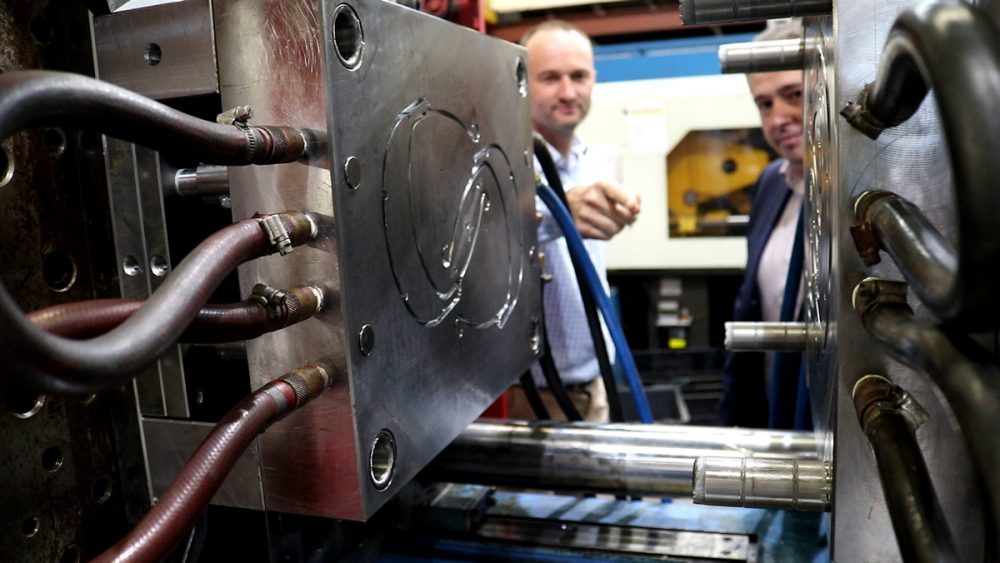
The Covid-19 pandemic has exposed weaknesses in Australia’s supply chains and manufacturing capacity and prompted a re-examination of the concept of sovereignty more broadly.
One prominent contention is that globalisation has been steadily eroding Australia’s manufacturing capability and that this trend needs to be reversed. Some commentators’ calls for government-mandated manufacturing are almost socialist in nature. Those on the opposing end of the spectrum argue for a return to the global market as soon as possible because free trade has underpinned our standard of living and the government’s ability to fund essential services.
Rather than engage in binary debates, the government must focus on making decisions in the best interests of Australians, notwithstanding what other nations do. This definition of sovereignty requires us to assess what constitutes an unacceptable risk of systemic failure in critical facets of our society, economy and governance structures from external factors. While Australia has a recognised risk-management standard, we need to look at areas such as aviation, engineering and defence for insights into how we should approach these assessments.
As a former military experimental test pilot, I dealt with risk on a regular basis. A key tool was a systems-engineering process known as ‘failure mode effects and criticality analysis’, or FMECA. That involves analysing all the component parts and systems that keep us safely airborne and identifying which ones could fail and which failures would be most likely to prevent a safe landing.
When practicable, the design can be altered to eliminate the failure mode in critical systems. If that’s not feasible, an accident causation model is applied to reduce the probability of failure and to mitigate the consequences of a failure to an acceptable level.
The pandemic has highlighted that we haven’t applied these principles to the range of processes, systems and interactions that underpin our government’s ability to make decisions that are in the best interests of Australians. We haven’t systemically defined and protected our sovereignty.
The public debate on liquid fuel security is the closest we’ve come in recent years to attempting this. That problem hasn’t been resolved, in part, because of the unfounded belief within the bureaucracy and the private sector that market forces will always ensure that someone, somewhere will be able to supply what we need, when we need it.
While Covid-19 has not yet disrupted fuel supplies, it has demonstrated that the established rules between nations rapidly become subservient to national interests. In light of this, Australia needs to revisit the fuel issue and to apply a FMECA standard to many other systems. These include the healthcare, finance, food and security systems—those we rely on to remain a functioning, developed nation.
The defence industry policy statement published in 2016 is an example of how such an analysis could be implemented through government policy and procurement. A 2015 report by parliament’s Joint Standing Committee on Foreign Affairs, Defence and Trade analysed how Defence could engage Australia’s private sector industrial base to increase sovereign control of military capability and lower the cost of maintaining technology. The report formed the basis of the policy statement, which initiated measures to develop a sovereign defence-industry capability.
While its implementation has not been entirely what the parliamentary committee envisaged, the defence industry policy statement has shown that the government has a range of options to reduce risk. These include co-investment in research and development, controlling access to intellectual property, underwriting manufacturing capacity through offtake agreements, and funding industry to create and sustain a capability that can be scaled up as demand requires.
Some facilities are government-owned and contractor-operated, while others involve long-term partnering arrangements with a commercial entity.
When Australia uses equipment produced overseas, other measures can mitigate potential failures in supply chains. These include investing to sustain things like the engineering ability to make decisions about issues such as material fatigue and to certify repairs, and Australian-based repair and overhaul facilities.
If a FMECA had been applied to health, for example, the government might have viewed differently the closure in 2015 of Australia’s only commercial facility manufacturing spunbond, which is the critical component in surgical masks. The plant in Albury was closed because it couldn’t compete on price with offshore providers.
During the pandemic, mask manufacturers have purchased supplies from overseas but foreign governments have blocked their export because of their own domestic requirements. The bidding wars to source protective equipment and the consequences of global shortages for health workers would suggest that some intervention in 2015 would have been prudent.
That could have been done by co-investing in better manufacturing processes, providing funding for research and development for an alternative to spunbond, or even entering into an offtake agreement to keep the plant open and capable of scaling up. That would have allowed the global market to provide the bulk of our business-as-usual needs at a lower price while retaining a domestic capability for times of crisis.
Keeping pace with software development is another key issue in sovereign capabilities. In the past, Australia has established weapons-system support facilities to enable, for example, control over aspects of mission-critical software in aircraft like the F/A-18 Hornet and F-111.
There’s also much we can learn from nations such as Finland, which has a National Emergency Supply Agency that coordinates reserves of a broad range of commodities, including medical supplies, oil, grains, agricultural tools and raw materials.
Covid-19 has sounded a national wake-up call that ceding sovereignty to the free market presents an unacceptable risk in critical areas.
The answer is not to nationalise manufacturing, which history has shown is unproductive. Australia must apply engineering principles to identify, quantify and manage systemic risk to the security of lives and livelihoods. This ongoing investment to find and maintain the optimal blend of global connectivity and self-reliance would form the basis of an Australian national sovereignty strategy.

